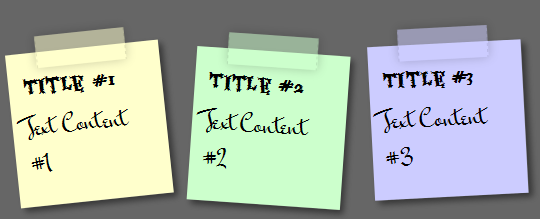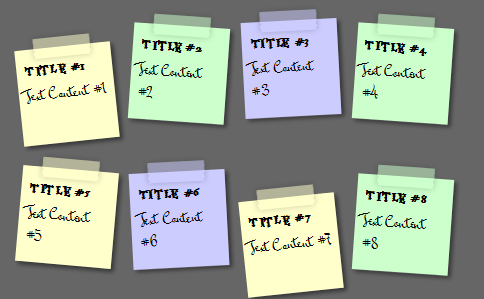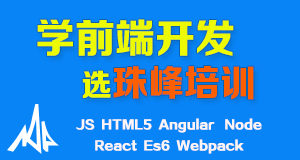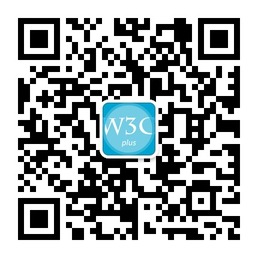CSS3制作留言墙
放假期间一直在家陪儿子玩,好久没有动手更新W3CPLUS了,今天刚好有时间学习了一下CSS3制作的留言墙。说白点就是像便签纸一样的效果,只是贴在墙上,当然大家也可以想像成贴在别的地方,具体什么地方我就不多啰嗦了,直奔主题。
目标
今天我们的目标很明确,也先清楚,就是使用css3的相关属性制作一个类似于留言墙的效果,如下面的demo所示:
HTML Markup
做任web页面效果,都少不了相对应的html结构,我们也不另外,不过这个实例相当的简单,就是一个无序列表“ul”,里面的内容大家可以根据自己的需求来写,我们此处是统一的“#1-#8”八个编号。
<ul> <li> <a href=""> <h2>Title #1</h2> <p>Text Content #1</p> </a> </li> [...] <li> <a href=""> <h2>Title #8</h2> <p>Text Content #8</p> </a> </li> </ul>
看到上面的html结构肯定有童学要骂我是误人子弟了——“怎么在a标签中嵌套块标签,不合规范呀”。按规范来说,这样是不标准,所以此处先声明,只是用在此处为了说明实例效果,大家在运用中可以根据自己的需求修改上面的html结构,或标签代码。此处仅供参考。
CSS Code
HTML结构没什么好看的,我们今天的关键是在于CSS样式这一块。制作上面的DEMO效果,使用了多个CSS3属性,较明显的:CSS3盒子阴影——box-shadow、CSS3变形——transform以及CSS3动画——transition,当然还使用了CSS3伪类选择器中的“:nth-child”和“:before”等等。下面我们就分几步来实现这个效果。
1、基本样式
* {
margin:0;
padding:0
}
body {
font-family:arial,sans-serif;
font-size:100%;
margin:3em 16em;
background-color:#666;
color: #fff;
}
h2,p {
font-size: 100%;
font-weight:normal;
}
ul,li {
list-style:none;
}
ul {
padding:3em;
font-size:0;
}
ul li {
/*让贴纸在按行显示,可以使用float实现效果*/
display: inline-block;
*display:inline;
zoom:1;
margin:1em 1em 3em;
font-size:16px;
}
ul a {
/*使用box-shadow制作阴影效果*/
-moz-box-shadow: 5px 5px 7px rgba(33,33,33,0.7);
-webkit-box-shadow: 5px 5px 7px rgba(33,33,33,0.7);
box-shadow: 5px 5px 7px rgba(33,33,33,0.7);
/*使用transform中的rotate制作旋转效果*/
-webkit-transform:rotate(-6deg);
-o-transform:rotate(-6deg);
-moz-transform:rotate(-6deg);
-ms-transform:rotate(-6deg);
transform:rotate(-6deg);
/*使用transition让transform属性变化更具生动性*/
-moz-transition: -moz-transform .15s linear;
-webkit-transition: -webkit-transform .15s linear;
-o-transition: -o-transform .15s linear;
-ms-transition: -ms-transform .15s linear;
transition: transform .15s linear;
/*为后面的胶纸效果设定一个参照值*/
position:relative;
/*实现一个四方形的标签纸效果*/
display:inline-block;
height:10em;
width:10em;
font-size:100%;
text-decoration:none;
color:#000;
background-color:#ffc;
padding:1em;
}
/*使用CSS3伪类选择器中的":before"制作胶纸效果*/
ul a:before {
content:'';
position:absolute;
top:-20px;
left: 20%;
width: 110px;
height: 40px;
background-color:rgba(255, 255, 204,0.5);
border-left: 1px dashed rgba(0, 0, 0, 0.1);
border-right: 1px dashed rgba(0, 0, 0, 0.1);
-webkit-box-shadow: 0px 0px 12px rgba(0, 0, 0, 0.2);
-moz-box-shadow: 0px 0px 12px rgba(0, 0, 0, 0.2);
box-shadow: 0px 0px 12px rgba(0, 0, 0, 0.2);
}
第一步我想大家能很容易的看懂,而且我在代码里做了具体的标注,每一部分代码起什么作用。这里只是另外提一下,制作标签纸的基本效果,我在此处主要使用了:CSS3盒子阴影——box-shadow、CSS3变形——transform、CSS3动画——transition以及CSS3伪类选择器。也就是前面所提到的几个属性。如果你对这几个属性不怎么了解,你可以点击相关的链接进入深一层的了解。
2、制作标签内容效果
这里的标签内容,字体非常特殊,显示的效果也就特别的与众不同,如下图所示:

此时大家肯定会想到使用CSS3本地字体——@font-face来实现上图的特殊字体效果。但是除了这种方法以外,还有没有别的方法呢?回答当然是肯定的,前面我在《Google Font的运用》一文中也有介绍过。那么今天我们为了固定以前所学的知识,这里的实例我不采用“@font-face”而是采用“Google Font Api”。
使用Google Font Api制作特殊字体效果,需要通过这里得到下面的代码:
<link href='http://fonts.googleapis.com/css?family=Mr+Bedfort|Eater' rel='stylesheet' type='text/css' />
得到上面的代码后,我们还要将其运用到我们的实例中,才起作用。否则的话,得到了也是无用的。那么首先将上面的代码放下页面的“<head>”与“</head>”之间,并且在需要使用这个特殊字体的地方调用下面的代码:
font-family: 'Eater',cursive; font-family: 'Mr Bedfort',cursive;
那么我们这个实例中分别运用在“h2”和“p”两个标签之中:
ul p {
font-family: 'Mr Bedfort', cursive;
font-size:180%;
}
ul h2 {
font-family: 'Eater', cursive;
font-size: 140%;
font-weight:bold;
padding-bottom:10px;
padding-top:5px;
}
这样也在本地电脑上具有特殊字体的效果,就算是你的用户没有这些字体也能正常显示这些效果。如果你还不太了解,你不仿点点这里,我想你会明白的,也会喜欢的。
3、制作不同色彩和位置的标签效果
说实现在的,其实完成前面的两步,我们的效果基本上是出来了,那么这一步主要是为了增加一些别的效果,比如说:使其不在同一位置,不是同一风格。如下图所示:

看到上图,大家或许会想到给li标签加类名,其实不用的,我们完全可能使用CSS3伪类选择器中的“:nth-child”来实现,如此处的运用:
/*给第2,4,6,8...2n处的标签改变旋转值和背景色*/
ul li:nth-child(even) a {
-webkit-transform:rotate(4deg);
-o-transform:rotate(4deg);
-moz-transform:rotate(4deg);
-ms-transform:rotate(4deg);
transform:rotate(4deg);
position:relative;
top:5px;
background-color: #cfc;
}
/*给第3,6,9...3n处的标签改变旋转值和背景色*/
ul li:nth-child(3n) a {
-webkit-transform:rotate(-3deg);
-o-transform:rotate(-3deg);
-moz-transform:rotate(-3deg);
-ms-transform:rotate(-3deg);
transform:rotate(-3deg);
position:relative;
top:-5px;
background-color: #ccf;
}
/*给第5,10,15...5n处的标签改变旋转值和背景色*/
ul li:nth-child(5n) a {
-webkit-transform:rotate(5deg);
-o-transform:rotate(5deg);
-moz-transform:rotate(5deg);
-ms-transform:rotate(5deg);
transform:rotate(5deg);
position:relative;
top:-10px;
}
/*改变对应的胶纸色*/
ul li:nth-child(even) a:before {
background-color:rgba(204, 255, 204,0.5);
}
ul li:nth-child(3n) a:before {
background-color: rgba(204, 204, 255,0.5);
}
此时你可能又会纠结一个问题,为什么是“2n”、“3n”和“5n”?难道我不能使用“2n+1”、“4n”之类的吗?告诉大家,可以的,你只要让你值不为0和负数就OK,当然还需要能满足你的需求。我截了一个图让大家参考:
有关于“CSS3伪类选择器”的使用,要是大家感兴趣的话可以狠狠点击这里查看。
4、制作焦点状态下的效果
为了让效果更趋于完美,我们在增加一个“焦点”状态下的效果。
ul li a:hover,
ul li a:focus {
/*改变阴影效果*/
-moz-box-shadow: 10px 10px 7px rgba(0,0,0,0.7);
-webkit-box-shadow: 10px 10px 7px rgba(0,0,0,0.7);
box-shadow: 10px 10px 7px rgba(0,0,0,0.7);
/*使用transform中的scale将便签纸放大*/
-moz-transform: scale(1.25);
-webkit-transform: scale(1.25);
-o-transform: scale(1.25);
-ms-transform: scale(1.25);
transform: scale(1.25);
position: relative;
z-index:5;
}
到此,前面预定的目标我们就算是完成了,最后我将所有的CSS Code统一列出:
/*step1*/
* {
margin:0;
padding:0
}
body {
font-family:arial,sans-serif;
font-size:100%;
margin:3em 16em;
background-color:#666;
color: #fff;
}
h2,p {
font-size: 100%;
font-weight:normal;
}
ul,li {
list-style:none;
}
ul {
padding:3em;
font-size:0;
}
ul li {
/*让贴纸在按行显示,可以使用float实现效果*/
display: inline-block;
*display:inline;
zoom:1;
margin:1em 1em 3em;
font-size:16px;
}
ul a {
/*使用box-shadow制作阴影效果*/
-moz-box-shadow: 5px 5px 7px rgba(33,33,33,0.7);
-webkit-box-shadow: 5px 5px 7px rgba(33,33,33,0.7);
box-shadow: 5px 5px 7px rgba(33,33,33,0.7);
/*使用transform中的rotate制作旋转效果*/
-webkit-transform:rotate(-6deg);
-o-transform:rotate(-6deg);
-moz-transform:rotate(-6deg);
-ms-transform:rotate(-6deg);
transform:rotate(-6deg);
/*使用transition让transform属性变化更具生动性*/
-moz-transition: -moz-transform .15s linear;
-webkit-transition: -webkit-transform .15s linear;
-o-transition: -o-transform .15s linear;
-ms-transition: -ms-transform .15s linear;
transition: transform .15s linear;
/*为后面的胶纸效果设定一个参照值*/
position:relative;
/*实现一个四方形的标签纸效果*/
display:inline-block;
height:10em;
width:10em;
font-size:100%;
text-decoration:none;
color:#000;
background-color:#ffc;
padding:1em;
}
/*使用CSS3伪类选择器中的":before"制作胶纸效果*/
ul a:before {
content:'';
position:absolute;
top:-20px;
left: 20%;
width: 110px;
height: 40px;
background-color:rgba(255, 255, 204,0.5);
border-left: 1px dashed rgba(0, 0, 0, 0.1);
border-right: 1px dashed rgba(0, 0, 0, 0.1);
-webkit-box-shadow: 0px 0px 12px rgba(0, 0, 0, 0.2);
-moz-box-shadow: 0px 0px 12px rgba(0, 0, 0, 0.2);
box-shadow: 0px 0px 12px rgba(0, 0, 0, 0.2);
}
/*step2*/
ul p {
font-family: 'Mr Bedfort', cursive;
font-size:180%;
}
ul h2 {
font-family: 'Eater', cursive;
font-size: 140%;
font-weight:bold;
padding-bottom:10px;
padding-top:5px;
}
/*step3*/
/*给第2,4,6,8...2n处的标签改变旋转值和背景色*/
ul li:nth-child(even) a {
-webkit-transform:rotate(4deg);
-o-transform:rotate(4deg);
-moz-transform:rotate(4deg);
-ms-transform:rotate(4deg);
transform:rotate(4deg);
position:relative;
top:5px;
background-color: #cfc;
}
/*给第3,6,9...3n处的标签改变旋转值和背景色*/
ul li:nth-child(3n) a {
-webkit-transform:rotate(-3deg);
-o-transform:rotate(-3deg);
-moz-transform:rotate(-3deg);
-ms-transform:rotate(-3deg);
transform:rotate(-3deg);
position:relative;
top:-5px;
background-color: #ccf;
}
/*给第5,10,15...5n处的标签改变旋转值和背景色*/
ul li:nth-child(5n) a {
-webkit-transform:rotate(5deg);
-o-transform:rotate(5deg);
-moz-transform:rotate(5deg);
-ms-transform:rotate(5deg);
transform:rotate(5deg);
position:relative;
top:-10px;
}
/*改变对应的胶纸色*/
ul li:nth-child(even) a:before {
background-color:rgba(204, 255, 204,0.5);
}
ul li:nth-child(3n) a:before {
background-color: rgba(204, 204, 255,0.5);
}
/*step4*/
ul li a:hover,
ul li a:focus {
/*改变阴影效果*/
-moz-box-shadow: 10px 10px 7px rgba(0,0,0,0.7);
-webkit-box-shadow: 10px 10px 7px rgba(0,0,0,0.7);
box-shadow: 10px 10px 7px rgba(0,0,0,0.7);
/*使用transform中的scale将便签纸放大*/
-moz-transform: scale(1.25);
-webkit-transform: scale(1.25);
-o-transform: scale(1.25);
-ms-transform: scale(1.25);
transform: scale(1.25);
position: relative;
z-index:5;
}
上面展示的是此例中运用到的所有CSS样式代码,不过大家千万不要忘记了第二步中的:
<link href='http://fonts.googleapis.com/css?family=Mr+Bedfort|Eater' rel='stylesheet' type='text/css' />
上面这段代码需要放置在“<head>”中,第二步的效果才会正常。
那么有关于CSS3制作留言墙的效果就到此结束了,希望能给大家带来一丝灵感,制作更好的效果。当然也希望大家喜欢这个案例。如果您有更好的想法,可以随时在下面的评论中给我留言。
如需转载烦请注明出处:W3CPLUS










